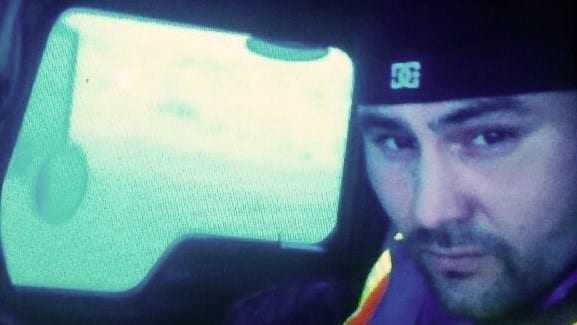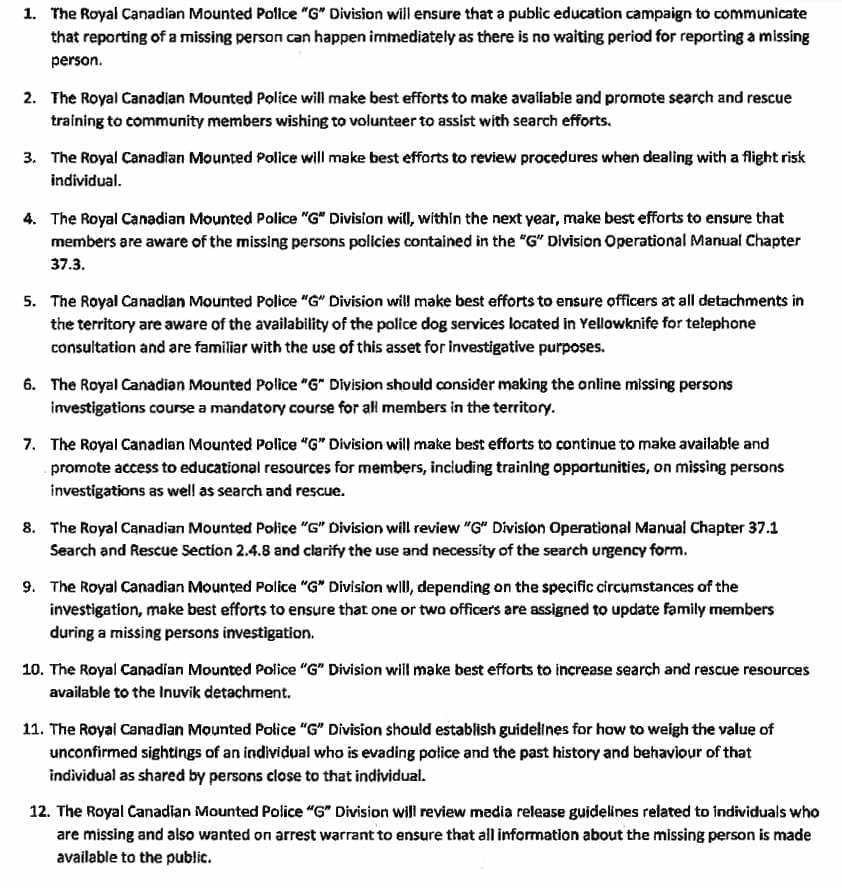A six-person jury has made 12 recommendations following a three-day inquest into the death of Richard Binder Jr. that was held March 3 to 5 in Inuvik.
Binder’s body was found approximately one kilometre west of the community near Big Lake Nov. 3, 2018. He died of hypothermia at age 35. On Oct. 25, 2018, Binder had escaped police when they attempted to put him under arrest.
After four hours of deliberation, the jury concluded that Richard Binder Jr.'s death was accidental.
First on the list of recommendations is that N.W.T. RCMP embark on a public education campaign to make sure people know there is no waiting period to declare someone missing.
Also suggested for the RCMP is to: promote search and rescue training for volunteer organizations; review the operation manual's chapter on search and rescue; review the policy on media releases; review procedures for individuals who run from police; and to establish guidelines to weigh the value of unconfirmed sightings.

Furthermore, RCMP are asked to consider making an online missing persons course mandatory training for officers as well as to promote other opportunities for training in search and rescue and missing persons.
Members should also be made aware of resources available for officers in search and rescue, including phone consultation and deployment of a police dog unit in Yellowknife.
RCMP are also requested to look into increasing the resources available to the Inuvik detachment.
Lastly, police are recommended to limit the amount of officers who meet with family to one or two members whenever possible to limit frustrations in communication.
A Feb. 26 press release from the NWT RCMP ("G" Division) said they will review any recommendations made by the jury.
During the second day of testimony seven witnesses spoke, including NWT RCMP supervisor Sgt. Christina Wilkins and forensic pathologist Dr. Mitchell Weinberg. Ontario search and rescue specialist and retired Ontario Provincial Police (OPP) officer Sgt. John Stirling also testified.
"I believe the RCMP did a great job," said Stirling. "They were following up on leads and going to different residences and confirming the integrity of the information."
He noted the investigation was handled properly, but RCMP could have conducted a separate search and rescue operation that would have run parallel of the criminal investigation.
Stirling also suggested the fact police were not finding Binder in Inuvik in spite of a barrage of tips putting him at various locations around town meant they should have expanded their search, adding OPP search and rescue operations for rural areas includes a search radius of 4.6 kilometres.
"The absence of clues is a clue in itself," he said. "If we knew he had fled before, that might have been a factor in the immediate decision (to not pursue.) But the longer he was away with no positive sightings, in my mind that could mean the person came across a misadventure in fleeing police."
Weinberg, who performed the autopsy on Binder, told court he died of hypothermia though he could not pinpoint an exact time of death. Binder's clothes were moist, which could have been from lying in the snow or from crossing the river.
Regardless, being wet would have accelerated the how quickly he could have frozen to death in -8C weather, particularly when he was only wearing a hooded sweatshirt and jeans.
"I'm speaking to a group of people north of the Arctic circle here," he said. "I don't think it is unreasonable for me to say this degree of clothing was inadequate for conditions at the time of the incident."
He added Binder had traces of diphenhydramine, the active ingredient in Benadryl, and amino-clonazepam which would have been metabolized from the anxiety medication Binder was taking.
Weinberg pointed out clonazepam can metabolize in the blood stream after death, so it was impossible to tell how much was active in Binder's system when he died, but the two drugs working in tandem, along with potential alcohol use, would have clouded judgment and could possibly explain why he did not return home.
Police received at least 10 tips on the whereabouts of Binder, but none of them lead to him. Binder's remains were discovered on a snow mobile trail near Big Lake on Nov. 3.
The 12 recommendations, as originally written, are as follows:
